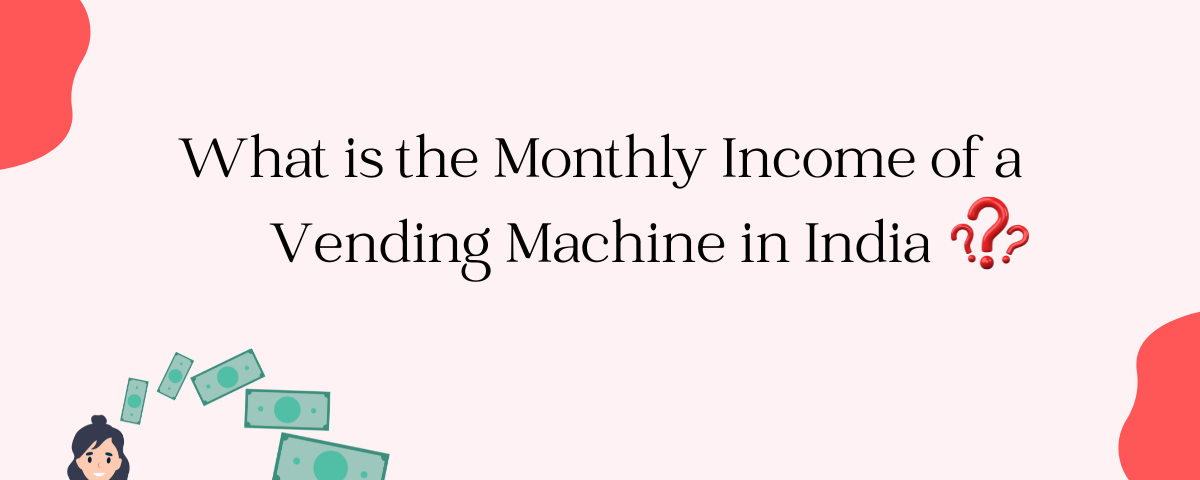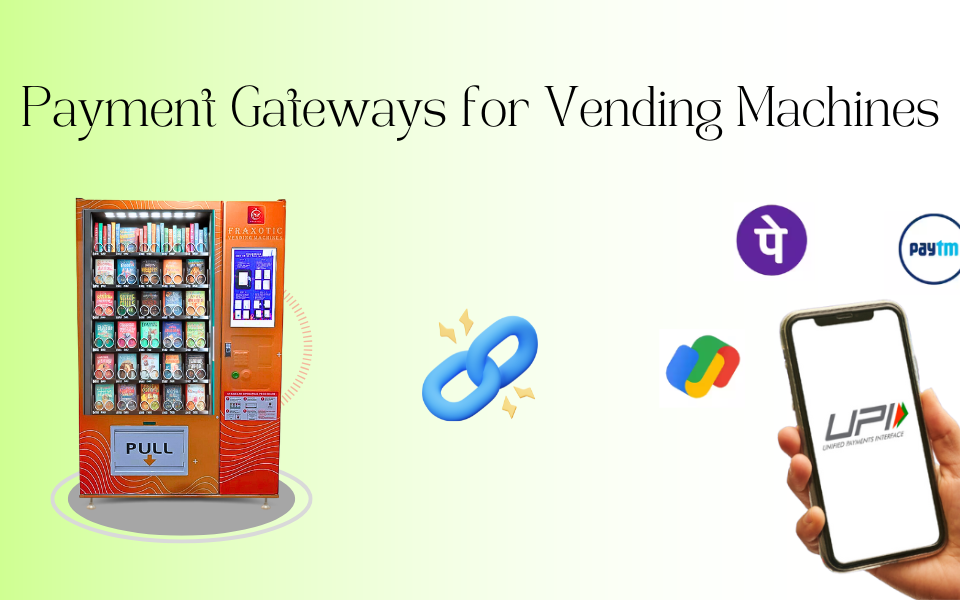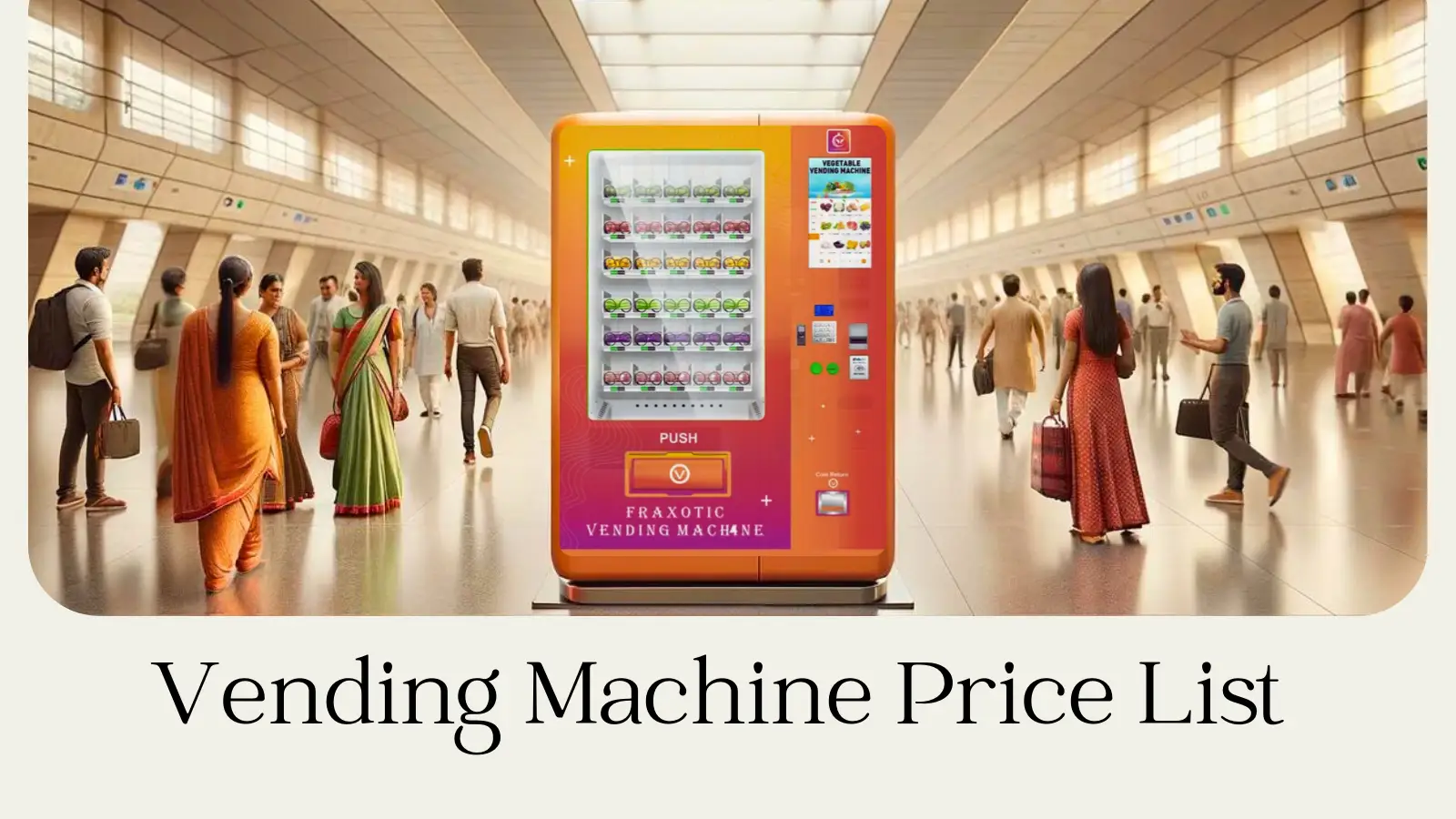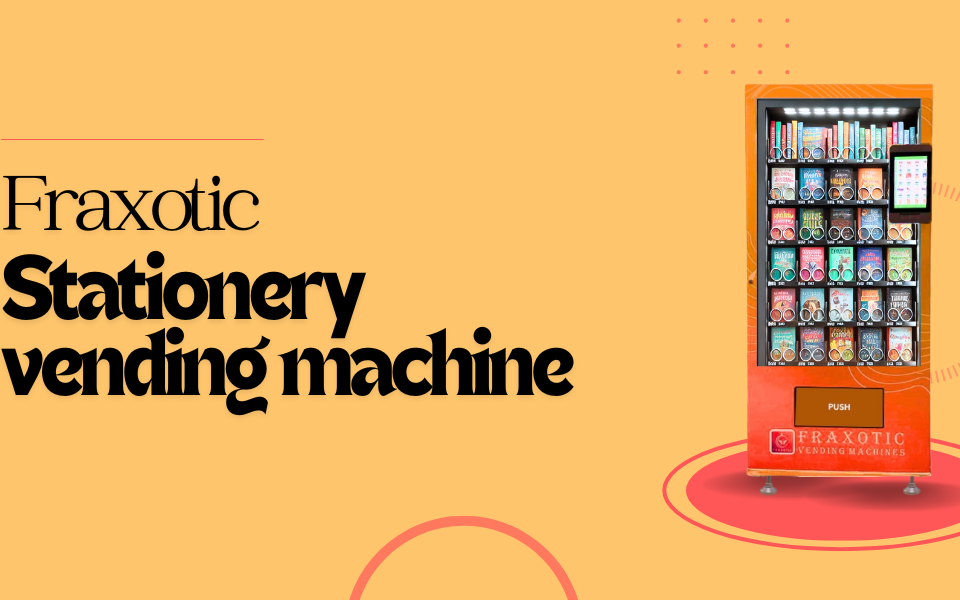
How to Purchase a Smart Vending Machine in India
May 3, 2024
How To Refill A Vending Machine?
May 10, 2024Vending machines are gaining traction in India’s retail sector due to their ability to provide quick and convenient access to various products. Understanding the potential monthly income of a vending machine in India is crucial for entrepreneurs seeking to diversify their revenue streams or expand into this growing industry. This blog about “What is the Monthly Income of a Vending Machine in India?” will break down the variables influencing income and outline strategies to optimize profitability.
Factors Affecting the Monthly Income of a Vending Machine
Foot Traffic and Demographics
Foot Traffic: High foot traffic is a primary driver of vending machine sales. Placing a machine in crowded spaces like shopping malls, airports, colleges, train stations, and business parks will ensure a steady stream of potential customers. It’s essential to understand the habits of these crowds, such as peak hours, which days see the most traffic, and whether foot traffic is consistent or seasonal.
Demographics: The demographics of the foot traffic matter significantly. Knowing the preferences of your target audience can help tailor the product mix:
- Students: Energy drinks, snacks, stationery, and mobile accessories are popular.
- Office Workers: Coffee, healthy snacks, and ready-to-eat meals are in high demand.
- Fitness Enthusiasts: Protein bars, shakes, and low-calorie snacks are attractive to this demographic
Product Freshness and Inventory Management
Product Freshness: Freshness is crucial, especially for food and beverage machines. Stale products deter repeat business and could lead to negative reviews. Regular rotation and adherence to expiration dates ensure appealing, fresh stock.
Inventory Management: Proper inventory management is crucial for preventing stockouts and avoiding waste. Effective systems:
- Track inventory levels and send alerts when stock is low.
- Analyze sales trends to identify popular items, replenishing them promptly.
- Rotate stock regularly to prevent expiration issues.
Payment Systems
Multiple Payment Options: Modern vending machines that accept various payment methods, including cash, cards, and digital wallets, attract more customers. Offering multiple payment options ensures that the machine caters to different customer preferences and improves sales:
- Cash Payments: Suitable for those without digital payment options.
- Card Payments: Contactless cards and chip-based debit/credit card payments.
- Mobile Payments: QR codes, NFC, and mobile wallets like Paytm and Google Pay.
Pricing and Promotions
Competitive Pricing: Pricing should align with the purchasing power of the target market. Overpricing can discourage customers, while underpricing may reduce profitability. Research competitors to ensure that prices are neither too high nor too low.
Promotional Offers: Discounts, bundles, and special offers can stimulate higher sales volumes by encouraging customers to buy more. Examples include:
- Bundle Deals: Combine snacks and drinks for a reduced price.
- Limited-Time Offers: Promote special offers during peak hours or specific events.
Machine Features and Technology
Smart Technology: Smart vending machines with touchscreen interfaces, remote inventory tracking, and real-time monitoring improve user experience and streamline operations. Real-time data helps:
- Monitor product demand and identify trends.
- Adjust pricing dynamically based on customer behavior.
Energy Efficiency: Energy-efficient machines reduce electricity costs and align with eco-friendly business practices. Machines with advanced refrigeration and LED lighting can significantly lower operational costs.
Operational Costs and Maintenance
Maintenance Costs: Regular maintenance keeps machines operating smoothly, minimizes downtime, and extends machine lifespan. Preventive maintenance schedules help:
- Identify potential problems early, preventing costly repairs.
- Ensure vending mechanisms, payment systems, and electronics remain functional.
Restocking and Supply Costs: Optimize supply chains by negotiating better deals with vendors or purchasing in bulk. Efficient restocking reduces travel and labor costs.
Brand Reputation and Customer Trust
Reputable Brands: Vending machines associated with trusted brands attract more customers, as people are more likely to trust known names with a proven track record.
Customer Support: Reliable and responsive technical support minimizes machine downtime, ensuring that issues like payment errors or product jams are resolved swiftly. This helps build customer trust and loyalty, leading to higher and more consistent monthly income.
Average Monthly Income Ranges for Vending Machines in India
| Type of Vending Machine | Average Monthly Income Range | Typical Products | Best Locations |
|---|---|---|---|
| Basic Snack & Beverage | ₹10,000 to ₹25,000 | Snacks, chips, soda | Small offices, gyms, local businesses |
| Smart Snack & Beverage | ₹30,000 to ₹60,000+ | Premium snacks, fresh beverages | Malls, universities, transportation hubs |
| Specialty Machines | ₹40,000 to ₹75,000+ | Electronics, cosmetics, or fresh food | Tech parks, corporate offices, airports |
| Health-Focused Machines | ₹20,000 to ₹50,000 | Low-calorie snacks, protein shakes | Fitness centers, health clubs, hospitals |
| Combination Machines | ₹25,000 to ₹50,000 | Mix of snacks, drinks, and small gadgets | Shopping malls, office complexes |
| Customized Vending Machines | ₹50,000 to ₹100,000+ | Tailored products based on customer demand | Corporate parks, high-end shopping centers |
Strategies to Maximize Monthly Income
Maximizing the monthly income from a vending machine in India requires strategic planning and effective execution. Let’s explore some key strategies in detail:
Strategic Placement of Machines
To maximize foot traffic and potential sales, place machines in high-traffic areas like malls, transit hubs, and office buildings. Consider competition from nearby stores or machines and partner with location managers to secure optimal spots.
Diversifying Product Offerings
By offering a variety of products, you can appeal to diverse tastes and seasonal preferences. Rotate your inventory regularly to maintain freshness and include specialty items like healthy snacks and premium drinks.
Effective Pricing Strategies
To capture a broad customer base, offer tiered pricing with bundle deals or volume discounts. Keep prices competitive by aligning them with customer expectations and experimenting with dynamic pricing during peak hours.
Marketing and Promotions
Promote your vending machine’s location through social media and attractive signage to draw attention. Offer time-based discounts or bundle offers to stimulate interest, and consider loyalty programs for frequent customers.
Improve User Experience
Ensure the machine accepts diverse payment methods and that the interface is intuitive. Keep it clean, well-lit, and stocked with fresh items to create a pleasant shopping experience.
Leverage Technology
Use smart technology to track inventory, analyze purchasing trends, and identify best-selling items. Optimize your product mix, pricing, and marketing strategies based on this data to meet customer demands.
Maintain Regular Maintenance Schedules
Conduct regular inspections and preventative maintenance to avoid unexpected breakdowns. Keep machines organized and clean to enhance reliability and improve customer satisfaction.
Conclusion
The monthly income of a vending machine in India varies significantly based on location, product selection, and operational efficiency. However, with strategic planning, careful product selection, and effective marketing, vending machines can provide a consistent and lucrative revenue stream. By understanding the key factors affecting profitability and adopting strategies to maximize sales, vending machines can play an integral role in expanding business opportunities.







1 Comment
Your point of view caught my eye and was very interesting. Thanks. I have a question for you.